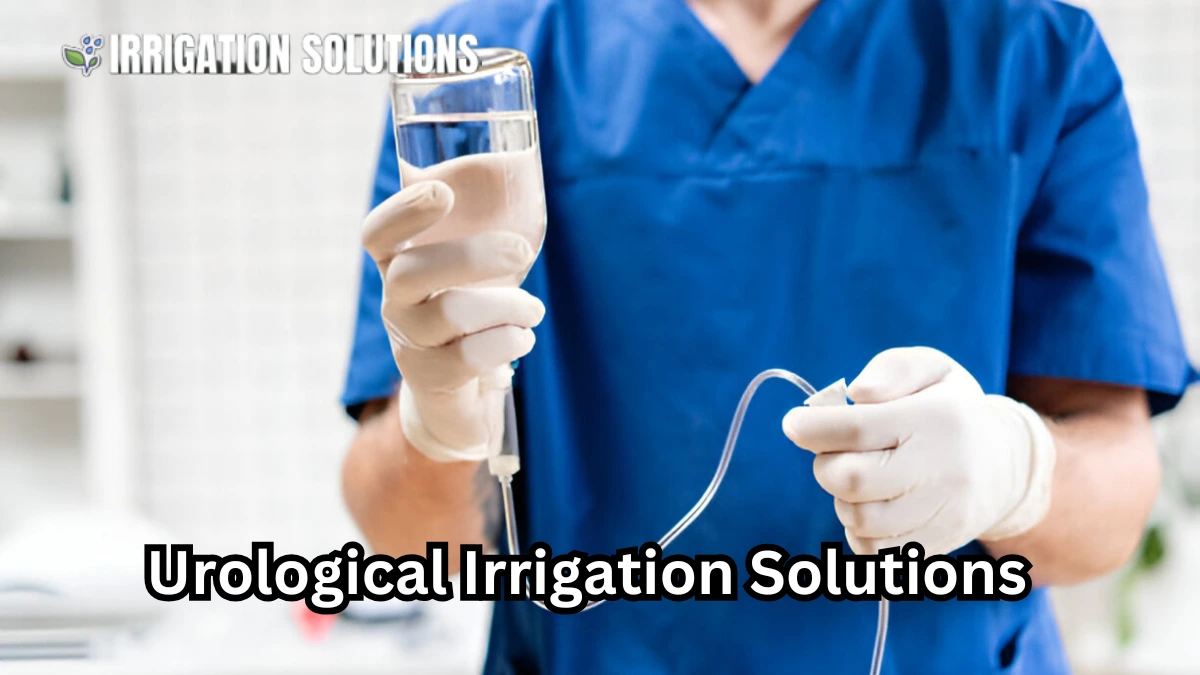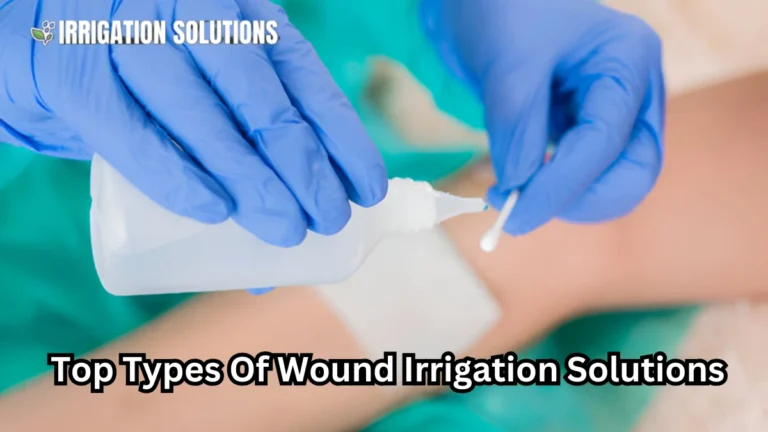urological irrigation solutions

Urological irrigation solutions play a crucial role in the management of various urinary conditions. From treating infections to improving bladder function, these solutions provide essential care for patients with urological issues. Whether you’re a healthcare professional or someone seeking to understand this aspect of urology better, this comprehensive guide will provide in depth knowledge, useful tips, and all the details you need to navigate the world of urological irrigation.
What Are Urological Irrigation Solutions?
Urological irrigation solutions are sterile fluids used to wash out or irrigate the urinary tract, bladder, or kidney. They are typically used in medical settings to prevent complications like infections, clear obstructions, or administer medication directly into the urinary tract. These solutions can be used in different types of procedures such as cystoscopies, catheterizations, or for routine maintenance of urinary catheters.
The primary goal of these solutions is to promote comfort, minimize infection risk, and improve overall urinary health.
Types of Urological Irrigation Solutions
There are several types of urological irrigation solutions available, each serving a specific purpose. Understanding the differences can help you choose the right one for a particular procedure or treatment.
Normal Saline
Normal saline is the most commonly used urological irrigation solution. It consists of 0.9% sodium chloride in water. It’s used for general irrigation of the bladder and urinary tract. Saline is typically chosen because it is isotonic, meaning it won’t disrupt the body’s natural fluid balance.
Uses of Normal Saline:
- Bladder irrigation post surgery.
- Clearing urinary obstructions.
- Maintaining the patency of indwelling catheters.
Sterile Water
Sterile water is a simpler option without any additives or solutes. While it can be used for irrigation, it’s not ideal for prolonged contact with tissues as it may cause hemolysis (destruction of red blood cells).
Uses of Sterile Water:
- Short-term irrigation after certain diagnostic procedures.
- Flushing catheters.
Antiseptic Solutions
Some conditions, like urinary tract infections (UTIs), require the use of antiseptic solutions to kill or inhibit bacterial growth. These solutions contain antiseptic agents like povidone iodine or chlorhexidine. However, care should be taken to avoid overuse as it can irritate the urinary tract lining.
Uses of Antiseptic Solutions:
- Preventing infection during catheter placement.
- Bladder irrigation in patients with chronic UTIs.
Acetic Acid Solutions
Acetic acid (vinegar) is often used in irrigation solutions for patients suffering from urinary tract infections (UTIs) caused by calcium phosphate or struvite stones. It helps to dissolve these stones and prevent new ones from forming.
Uses of Acetic Acid Solutions:
- Treating patients with kidney stones.
- Irrigating the bladder in cases of recurrent infections.
Antibiotic Solutions
In some cases, doctors may prescribe antibiotic irrigation solutions to help manage infections directly in the urinary tract. These solutions often contain antibiotics such as gentamicin or amikacin, which are delivered directly into the bladder.
Uses of Antibiotic Solutions:
- Treating specific infections that have not responded to oral antibiotics.
- Prophylaxis during bladder surgery.
Factors to Consider When Choosing a Urological Irrigation Solution
When selecting an irrigation solution, it’s important to consider the patient’s condition, the purpose of the irrigation, and the type of procedure being performed. Here are some key factors to keep in mind:
Patient’s Health Status
The patient’s overall health, including their kidney and bladder function, should be assessed. Solutions with a high concentration of salt may not be ideal for patients with kidney problems, while sterile water should be used cautiously to avoid hemolysis.
Infection Risk
For patients at high risk of infection, antiseptic or antibiotic solutions are preferable. These solutions help reduce the chances of bacteria growing in the urinary tract.
Procedure Type
The choice of irrigation solution may vary depending on whether the procedure is a routine catheter change, a bladder washout after surgery, or the treatment of infections or stones.
Benefits of Urological Irrigation Solutions
Urological irrigation solutions offer several benefits, both in acute and long-term care situations. Here are the key advantages:
- Prevent Infections: They help reduce the risk of infection by clearing bacteria and debris from the urinary tract.
- Clear Obstructions: Irrigation can help to dislodge clots or stones blocking the urinary flow.
- Maintain Catheter Patency: Regular irrigation helps prevent blockages in indwelling catheters, reducing the need for replacement.
- Promote Healing: Irrigating the bladder with sterile solutions can help remove irritants and promote tissue healing post-surgery.
How Urological Irrigation Solutions Are Used in Medical Procedures
Urological irrigation is frequently used in several medical procedures. Let’s look at some common ones:
Cystoscopy
A cystoscopy is a procedure where a doctor examines the bladder using a special instrument. During the procedure, irrigation solutions may be used to keep the bladder distended and clean, allowing for a clear view.
Irrigation Solution Used:
- Normal saline or sterile water.
Catheterization
Patients with urinary retention or other issues may require a catheter. Irrigation solutions are used to flush the catheter, preventing blockages from blood clots or debris.
Irrigation Solution Used:
- Normal saline or antiseptic solutions, depending on the risk of infection.
Bladder Irrigation Post Surgery
After bladder surgeries, patients often require irrigation to remove blood clots and prevent infection.
Irrigation Solution Used:
- Normal saline or antibiotic solutions, based on the patient’s condition.
Kidney Stone Management
For patients with kidney stones, acetic acid or other specialized solutions are used to dissolve the stones and prevent them from obstructing the urinary tract.
Irrigation Solution Used:
- Acetic acid solution or other acid based solutions.
Potential Risks and Side Effects
While urological irrigation solutions are generally safe, there are some risks and side effects to be aware of:
- Infection: If irrigation solutions are not properly handled or sterilized, they can introduce bacteria into the urinary tract.
- Bladder Irritation: Some solutions, especially antiseptic ones, may irritate the bladder lining if used excessively.
- Electrolyte Imbalance: Solutions with high concentrations of salt may lead to electrolyte imbalances, especially in patients with kidney issues.
- Hemolysis: Sterile water can cause the destruction of red blood cells, leading to hemolysis in prolonged contact with the bladder.
How to Administer Urological Irrigation Solutions
The process of administering urological irrigation solutions varies depending on the method being used. Below is a general guide on how it’s typically done:
- Prepare the Equipment: Ensure you have sterile gloves, sterile syringes, and the chosen irrigation solution.
- Position the Patient: Depending on the procedure, the patient may need to lie on their back or side.
- Administer the Solution: Slowly introduce the irrigation solution into the urinary tract, bladder, or catheter. In cases of catheterization, the solution is usually injected via the catheter.
- Monitor: Continuously monitor for any signs of discomfort or infection and adjust accordingly.
Case Study: Urological Irrigation in Kidney Stone Management
Patient Background: A 55-year old male diagnosed with recurrent kidney stones.
Treatment: The patient was undergoing a procedure to remove a large stone. Following the surgery, a mixture of acetic acid and normal saline was used for bladder irrigation.
Results: The irrigation solution successfully helped dissolve smaller stone fragments, reducing the risk of future obstructions. Post-procedure recovery was smooth with no signs of infection.
Conclusion
Urological irrigation solutions are essential tools in the management of urinary tract health, offering benefits such as preventing infection, maintaining catheter patency, and helping with the treatment of kidney stones. With a wide variety of solutions available, selecting the right one is crucial to ensuring the best outcomes for patients. Whether used for routine care or specialized treatments, urological irrigation plays a significant role in modern healthcare.
Understanding the different types of solutions, their benefits, and how to use them correctly is important for healthcare professionals and patients alike. Always consult with a medical professional to ensure you’re using the right solution for your specific needs.
For further information on urological irrigation solutions and their applications, be sure to consult medical journals, textbooks, or trusted online healthcare resources.






